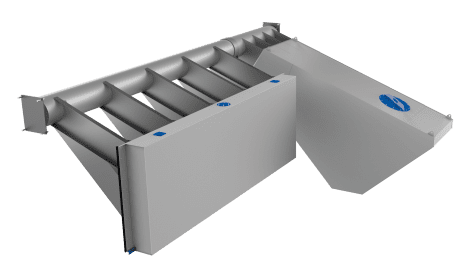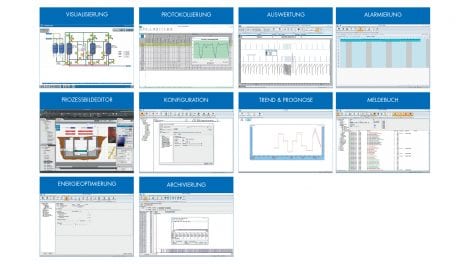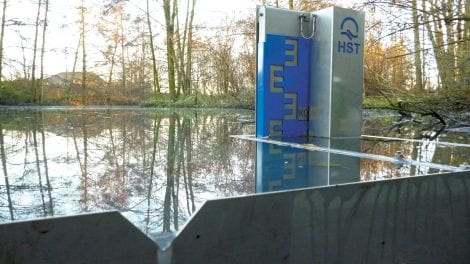Stormwater Retention Basin
Systems and solutions for: Stormwater retention basins
Extreme weather events with heavy rainfall are frequent features of climate change. Housing development and paving of green spaces are increasing the flow volume entering the sewer networks, often beyond their capacities. The polluted excess water either causes flooding of urban areas or it is released directly into local waters, known as combined sewer overflow (CSO). Both scenarios cause severe threats to public health and to aquatic life in our rivers and lakes. We consider these kinds of CSOs as unacceptable in a modern society. To prevent this, it is necessary to build either stormwater retention basins or deep storage tunnels.
HST near your location
![]() Germany
Germany
HST Systemtechnik
Heinrichsthaler Straße 8
D-59872 Meschede
+49 – (0) 291 – 99 29 -0
+49 – (0) 291 – 76 91
info@hst.de
Find the contact person
![]() HST Worldwide
HST Worldwide
Definition
(according to Wikipedia)
A flood retention basin (HRB) is a reservoir with the main purpose of regulating the flow rate of a stream in floods. It damps the outflowing flood wave by buffering excessive water loads and releasing them in a controlled manner once an event subsides. The pool is normally empty (so-called dry pool or green pool) or partially filled (permanently filled basin).
Classification of HRBs (country-specific):
Class B: very small pools, capacity up to 50,000 m³, dam height up to 4,0 m
Class 3: smaller pools, capacity up to 100,000 m³, dam height up to 6,0 m, (dam-class 3)
Class 2: middle pools, capacity up to 1.000.000 m³, dam height up to 15.0 m, (dam-class 2)
Class 1: large basins, content over 1.000.000 m³, dam height over 15.0 m, (dam-class 1)
The technical equipment of HRBs consists of:
- Basic and operating outlets in the form of gates or segmental weirs
- Flood relief facilities for filled basins in the form of fixed overflows or weirs
- Measurement technology for levels and levels
EMSR and automation for plant control and management - SCADA and cameras for monitoring and recording operating conditions with documentation
- Dam book to document the later operation
- Due to the high potential for damage, the operational safety of the technical equipment and the management in hazardous situations with a focus on as few operating points as possible play a very important role.
With the experience gained from many completed projects, HST also offers the tried-and-tested technical solution from a single source for the technical equipment of HRB’s based on DIN 19700, predominantly with their own products!
Due to its compact design, the two-track transverse structure of the dam for ground and operating outlet and flood discharge, which we have developed, guarantees minimal intervention with technical structures in the landscape (only a concrete structure), optimum ecological continuity and concentrates all technical equipment in just one operating point.
Our Solution
In consultation with the building owners, approval authorities and planners, the HST solution essentially consists of:
- The bottom outlet in the form of sliding or roller contactors with electric or hydraulic drives
- The operating outlet, if necessary, for better outflow control in the form of segment weirs with hydraulic drive
the flood relief with ASK weirs (float-controlled, without external energy, with maximum operational reliability even with complete power failure) for optimal utilization of the storage volume - The facilities for coarse material retention, impact protection and to avoid jamming, if necessary
- The complete electrical engineering, if necessary. with emergency power supply
- The complete measuring technology with automatic calibration of the measuring equipment (for example, the central basin level measurement for the plant control) to ensure the constant measuring accuracy due to the usual device accuracy drift
- The automation for the operation of all technology. Facilities taking into account constraints and other outflow conditions, e.g. in local layers below the dam
- The SCADA system (SCADA V10 or SCADA.web) for digital plant monitoring, data acquisition and documentation of all operating states, faults and limits, including reporting, with protected remote access
- Networking with government agencies and municipal and governmental emergency services and, if available, with existing IT systems
- The visual monitoring of installations with cameras, also for burglar and vandalism protection and documentation
- The precipitation portal NiRA.web, for the documentation of precipitation, including the 72-hour forecast, if necessary, including prognosis (including heavy rain warning) in plant automation (IoT)
- The digital dam book gem. DIN 19700 with the KANiO-Fachschale – dam book for digital inventory and operating documentation
- The service hotline and the maintenance and repair in later operation
The HST-HRB-System has undergone a comprehensive risk assessment in accordance with DIN 19700, Part 10 by the licensing and supervisory authorities (LfU Bayern, RP, WWA) and has successfully passed them without any restrictions.
We provide comprehensive planning support in terms of consulting, dimensioning, dimensioning, planning documents with examples, performance texts, etc.!
Products



NiRA.web
Precipitation is measured with radar – nationwide and current. The data service NiRa.web is a joint product of HST and MeteoGroup and an innovative…

SCADA V10
Process control software for process control, process monitoring and logging….

SCADA.web
Web portal for remote monitoring and control of spatially distributed plants…

Segmental Weir
Segmental weirs are widely used where it is necessary to regulate water amounts with high pressure….

News on the topic

HST AUF DER AQUA URBANICA
Im Vordergrund stellte HST – Vertriebsingenieur Oliver Cuntz ein Verfahren vor, mit dem sich Überlaufwassermengen an Wehrschwellen zuverlässig und nachvollziehbar ermitteln lassen. Einen weiteren Schwerpunkt…





